Apple Vision Pro vs Meta Quest 3 compared - Displays, prices & graphics
When choosing between the Apple Vision Pro and the Meta Quest 3, users are confronted with two formidable pieces of technology at very different price points. Here's how they stack up.
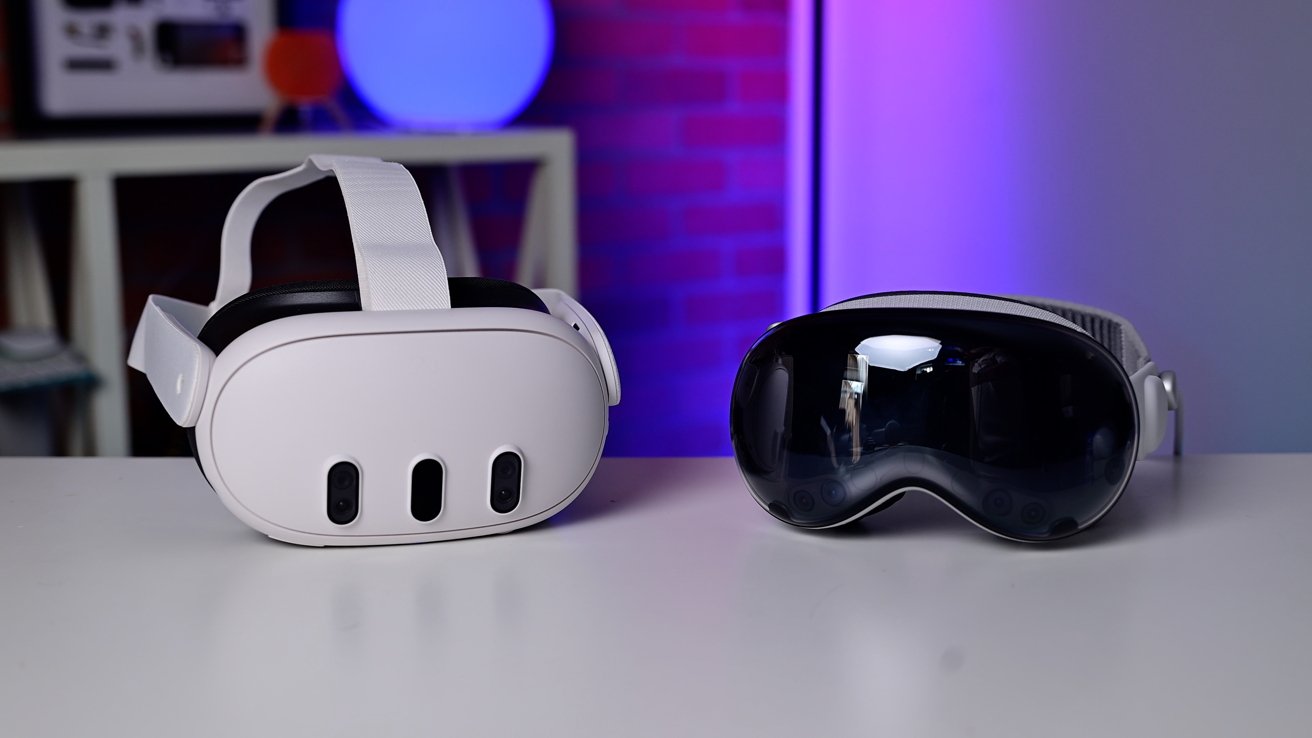
Meta Quest 3 (left) and Apple Vision Pro (right)
The Apple Vision Pro was first previewed on on June 5, 2023 and shipped to the public on February 2, 2024. It's clear by looking at it, that it's an Apple product, taking design cues from the iPad, iPhone, and AirPods Max.
The Meta Quest 3 made its official debut on June 1, 2023, and subsequently hit the market on October 10, 2023, offering users access to its advanced features and functionalities.
The Apple Vision Pro sports a sleek and high-end aluminum and glass frame design on the outside, and boasts deep Apple ecosystem integration inside. In contrast, the Meta Quest 3 champions accessibility and versatility, boasting a more pragmatic plastic construction geared towards portability and comfort.
Apple Vision Pro versus Meta Quest 3 - Specifications
| Specifications | Apple Vision Pro | Meta Quest 3 |
|---|---|---|
| Price (starting) | $3,499.00 | $499.99 |
| Display technology | micro-OLED | 4K+ Infinite Display (LCD) |
| Display resolution | Estimated 3660x3142 per eye | 2064x2208 pixels per eye |
| Refresh rate | Variable (90Hz, 96Hz, 100Hz) | Variable (72Hz, 80Hz, 90Hz, 120Hz) |
| Processor | M2, R1 | Snapdragon XR2 Gen 2 |
| Storage | 256GB, 512GB, 1TB | 128GB, 512GB |
| IPD | Adjustable (51mm to 75mm) | Adjustable (53mm to 75mm) |
| Field of view | Approximately 100 degrees (horizontal) | 110 degrees (horizontal) and 96 degrees (vertical) |
| Weight | 600-650 grams | 515 grams |
| Battery life | Up to 2 hours (general use) | Up to 2.2 hours (general use) |
Apple Vision Pro versus Meta Quest 3 - Design and weight
When comparing the Apple Vision Pro and the Meta Quest 3, both headsets showcase distinct design philosophies and ergonomic considerations.
The Vision Pro is a headset crafted for comfort and extended use. It weighs between 21.2 and 22.9 ounces (600-650 grams), while the Meta Quest 3 is lighter at 515 grams.
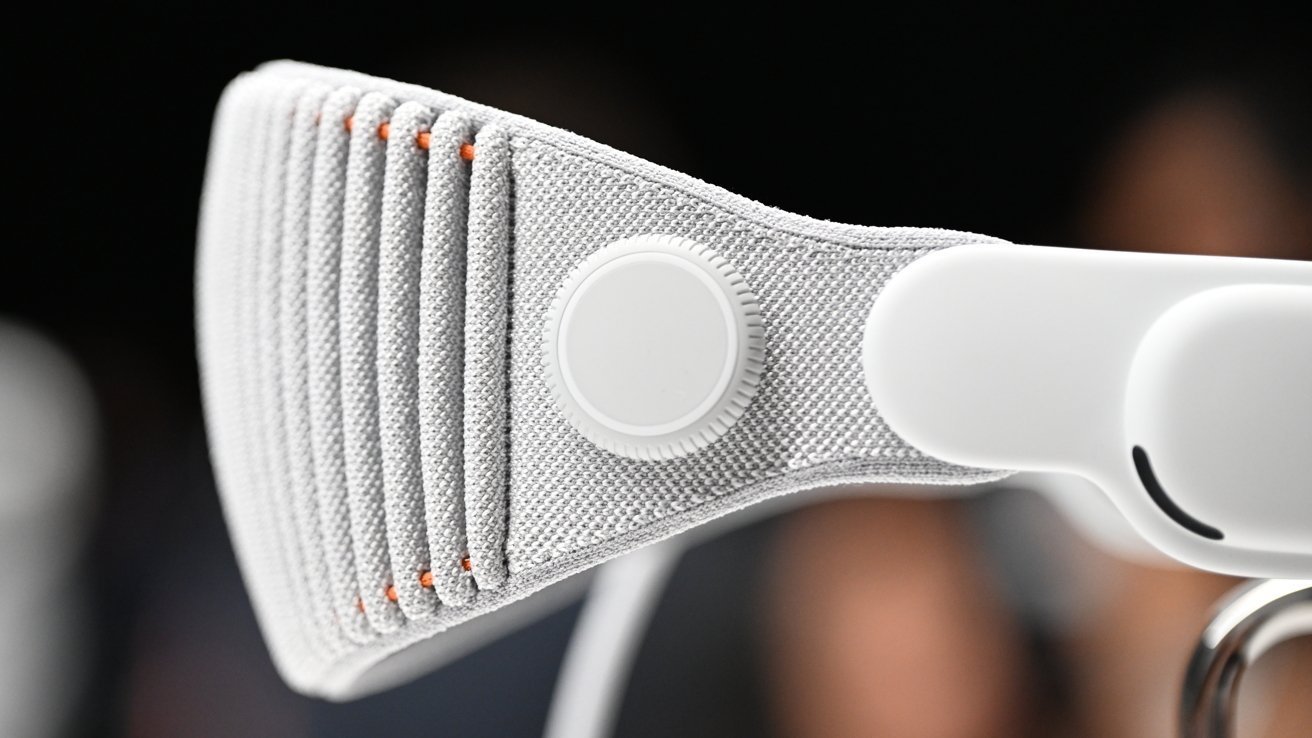
The Vision Pro is a headset crafted for comfort and extended use.
The main housing of the Meta Quest 3 is made of plastic, where Apple opted for an aluminum and glass frame. Any given Apple Vision Pro has one of a few different Light Seal options fitted at purchase, and a choice of two customizable headbands in the box, made from soft textiles and knitted fabric.
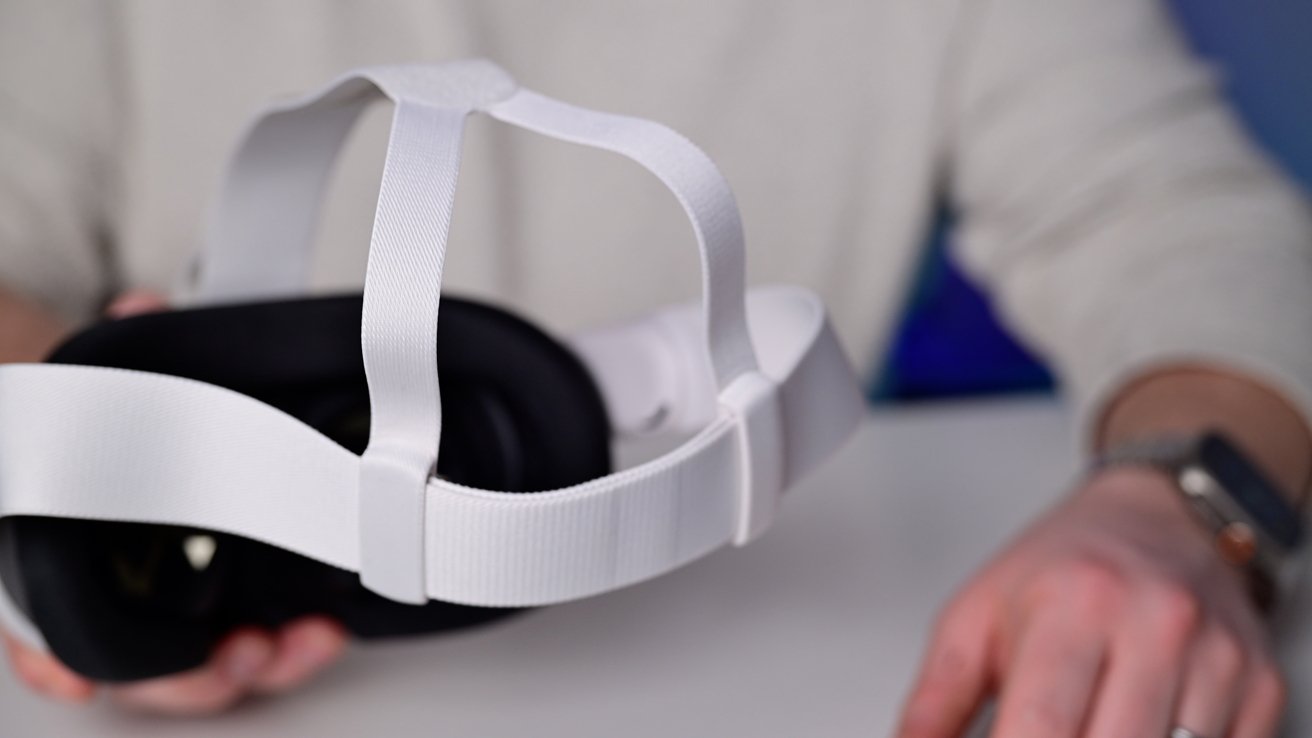
Meta Quest 3's strap
In contrast, the Meta Quest 3 offers a variety of materials and accessories like the Standard Facial Interface, the anti-microbial VR Cover with foam lining, and a separate Silicone Facial Interface.
While both headsets offer ergonomic designs aimed at maximizing user comfort, the choice between them ultimately comes down to individual preferences. Some users may prefer the sleek and premium feel of the Apple Vision Pro, while others may prioritize the lightweight and practical design of the Meta Quest 3.
Apple Vision Pro versus Meta Quest 3 - Display
The Apple Vision Pro employs micro-OLED technology, known for its exceptional image quality and high pixel density. The Meta Quest 3, on the other hand, features a 4K+ Infinite Display using LCD technology.
The Vision Pro boasts an impressive 23 million pixels in total with a 7.5-micron pixel pitch, offering detailed and sharp visuals. While Apple hasn't officially disclosed the resolution for the Vision Pro, it's estimated to be effectively 3,660 x 3,142.
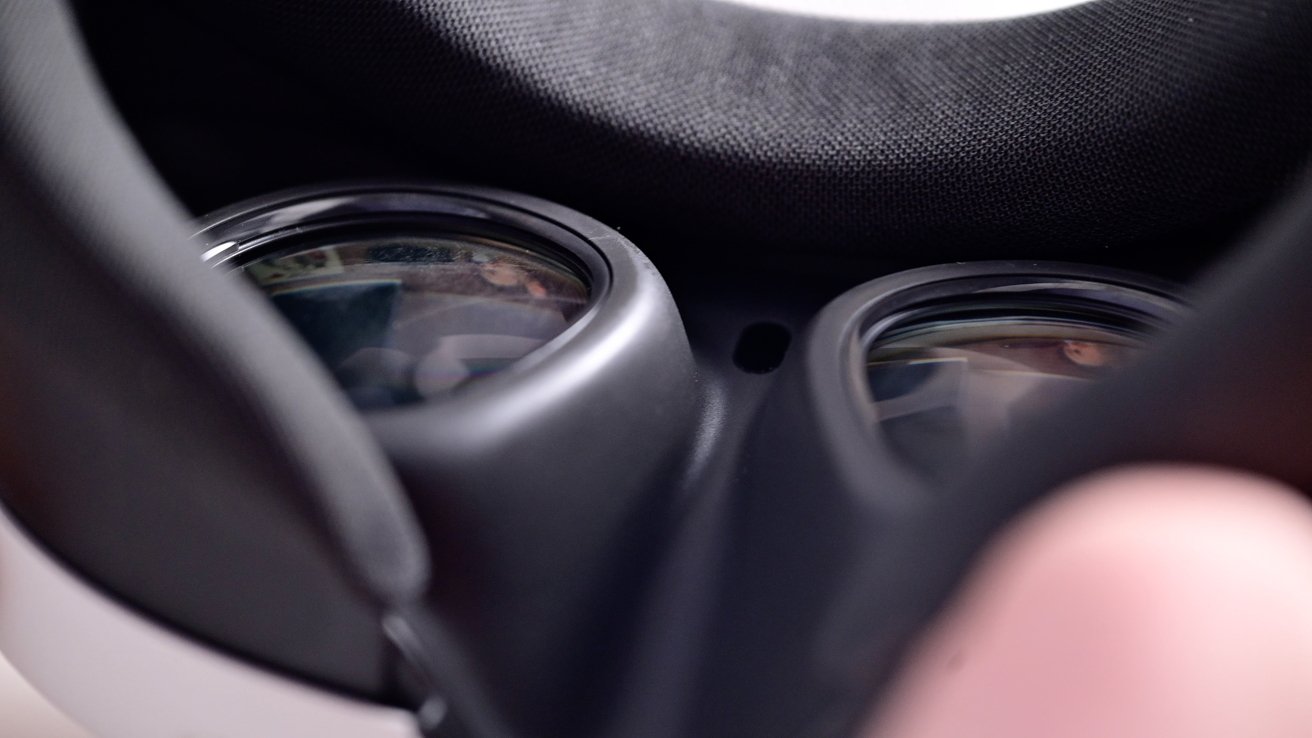
The resolution on the Quest 3 isn't as high as the Vision Pro
Meanwhile, the Meta Quest 3 has 2,064 x 2,208 pixels per eye.
The Meta Quest 3 display offers 25 Pixels Per Degree (PPD) and 1218 Pixels Per Inch (PPI), providing the highest resolution in the Quest lineup for an immersive VR experience. While Apple hasn't shared similar information, it does say the Vision Pro has a pixel pitch of 7.5 microns.
However, Meta doesn't list its specific pixel pitch for the Quest 3. A lower pixel pitch often means higher pixel density, enhancing image quality by allowing more pixels in a given area for sharper, more detailed visuals.
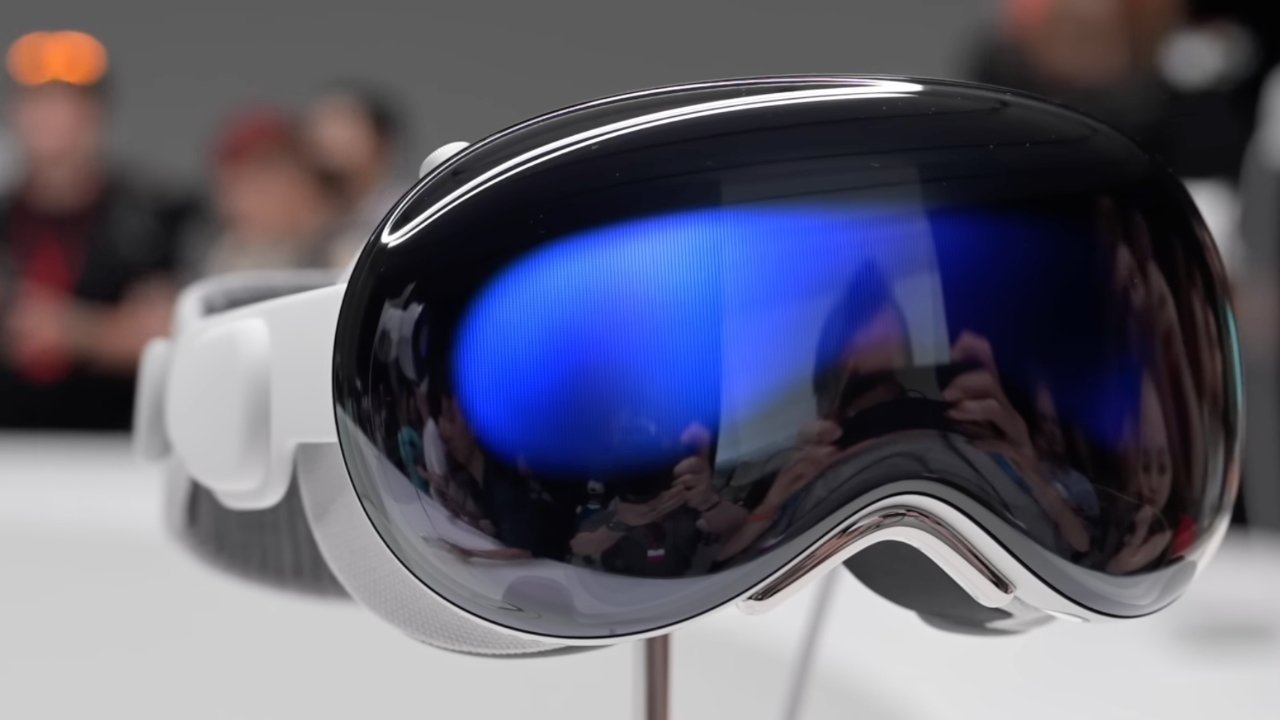
The Apple Vision Pro employs micro-OLED technology
The Vision Pro supports a wide color gamut with 92% DCI-P3 coverage, ensuring rich and accurate color reproduction. While not specified, the Meta Quest 3's color performance is likely to be robust, given its advanced display technology.
Additionally, the Vision Pro supports various refresh rates, including 90Hz, 96Hz, and 100Hz, to provide smooth motion and reduced motion blur. The Meta Quest 3 offers a wide range of refresh rates -- 72Hz, 80Hz, 90Hz, and 120Hz -- catering to different VR requirements and enhancing the overall visual experience.
The Apple Vision Pro and Meta Quest 3 offer adaptable Interpupillary Distance (IPD) settings. IPD is the measurement between the centers of the pupils of the eyes, crucial for aligning visuals in headsets for optimal clarity and comfort.
The Vision Pro's IPD adjustment ranges from 51mm to 75mm, accommodating a broad spectrum of users. In contrast, the Quest 3 features an almost exact IPD range of 53mm to 75mm, with a mechanical adjustment wheel for precise and comfortable lens spacing.
The Meta Quest 3 boasts an impressive field of view (FOV) with 110 degrees horizontally and 96 degrees vertically, significantly expanding the immersive virtual experience. In contrast, the Apple Vision Pro offers a horizontal FOV of approximately 100 degrees, as suggested in an Apple developer session, although the vertical FOV remains undisclosed by Apple.
Field of view is a crucial metric in the realm of virtual and augmented reality. It defines the extent of a user's visual perception within a headset, specifying how much of the virtual or augmented environment they can see. A wider FOV provides a more immersive experience by extending a person's peripheral vision.
The Apple Vision Pro surpasses the Meta Quest 3, largely due to its pioneering micro-OLED technology that ensures excellent image quality and pixel density. It offers visuals that are not only sharp and detailed but also rich in color.
Apple Vision Pro versus Meta Quest 3 - Processing power
The Meta Quest 3 headset comes with the Snapdragon XR2 Gen 2 chip. The significant boost in graphics processing from the previous Snapdragon VR-oriented processor generations translates to faster load times and a gaming experience with fewer compromises.
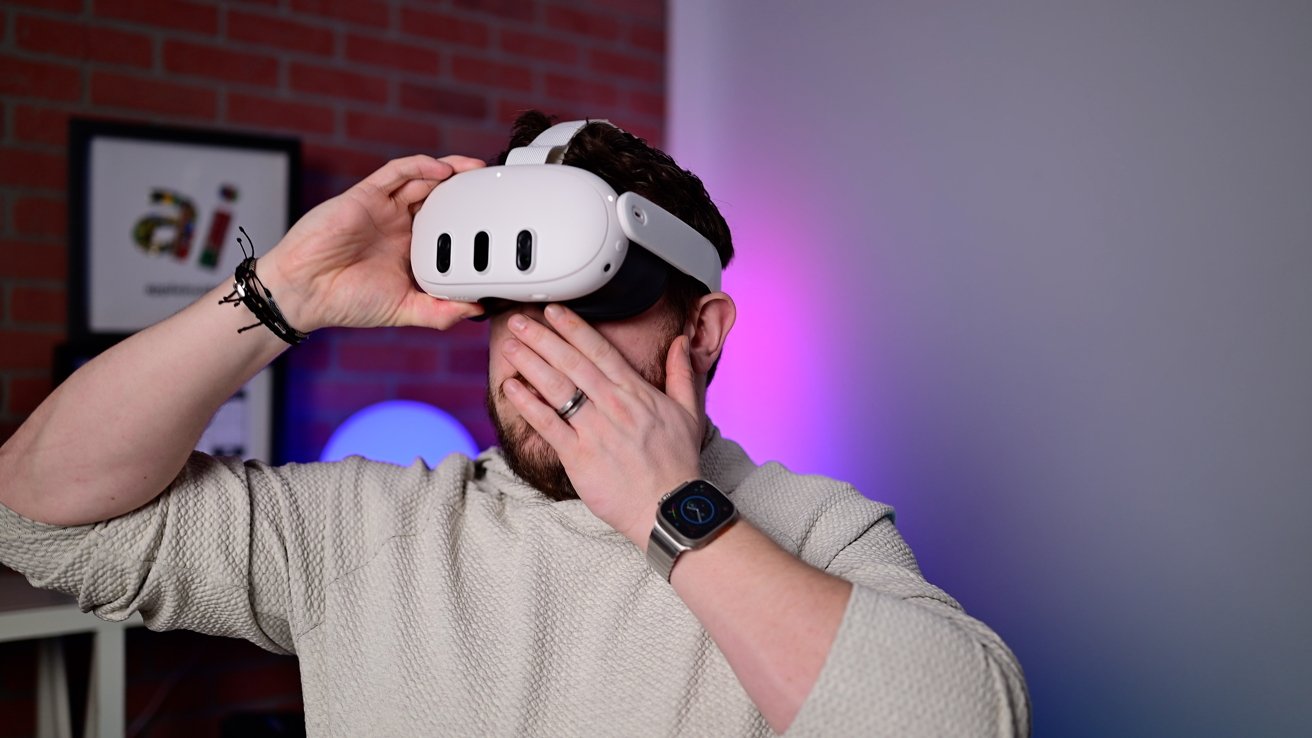
Quest 3 did give us some nausea after using passthrough
Moreover, the Snapdragon XR2 Gen 2 chip enables advanced features like seamless full-color, high-resolution passthrough, and robust support for heavy applications.
On the other hand, the Apple Vision Pro M2 chip is a powerful system-on-chip with an 8-core CPU, 10-core GPU, 16-core Neural Engine, and 16GB of unified memory. It also has an "R1" chip.
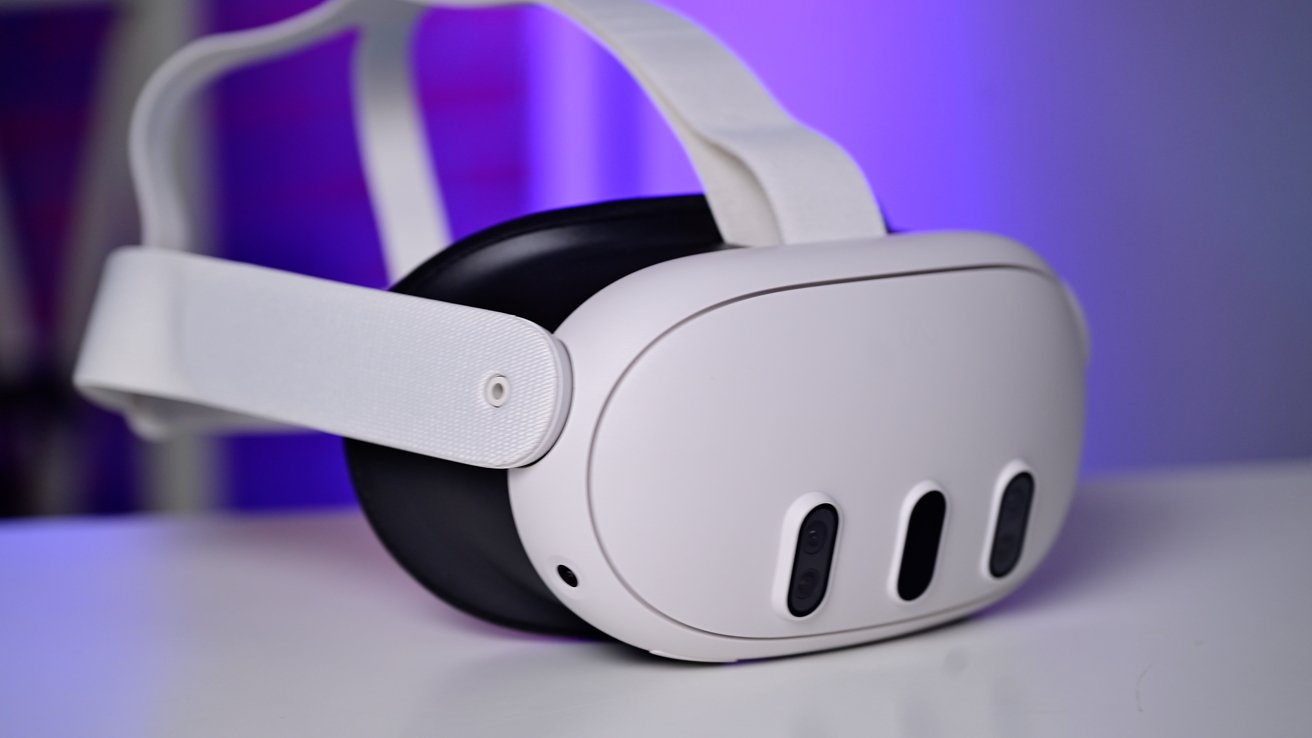
The Meta Quest 3
Apple's R1 chip is well-suited for applications where low latency and high-speed data transfer are critical. The R1 chip has a low latency of 12 milliseconds for photon-to-photon communication and an impressive memory bandwidth of 256GB/s.
However, it's important to note that the R1 chip serves a specific purpose that doesn't directly compete with the functionalities of the Meta Quest 3 headset or the Apple Vision Pro M2 chip.
While both chips offer excellent performance for VR applications, the M2 chip's integration with Apple's ecosystem provides unique advantages in terms of software optimization and compatibility.
Apple Vision Pro versus Meta Quest 3 - Cameras
The Apple Vision Pro is equipped with cameras and sensors, including a stereoscopic 3D primary camera system featuring an 18mm lens and 6.5 stereo megapixels, allowing for spatial photo and video capture.
It further incorporates two high-resolution main cameras, six world-facing tracking cameras, four eye-tracking cameras, a TrueDepth camera, a LiDAR Scanner, four inertial measurement units (IMUs), a flicker sensor, and an ambient light sensor.
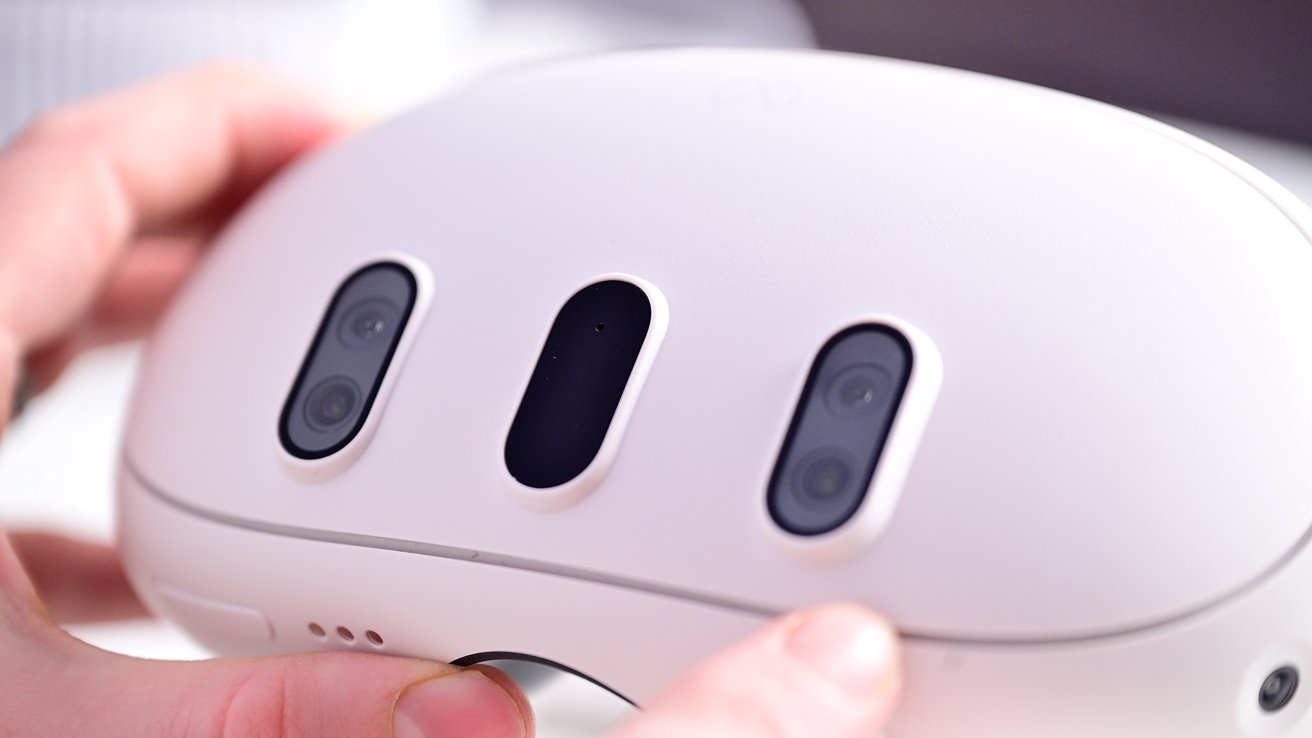
Quest 3 has several front-facing cameras
The extensive camera and sensor suite make it a powerhouse for spatial perception and advanced AR applications.
In contrast, the Meta Quest 3 focuses on mixed reality and spatial tracking with its six-camera setup. The front face of the headset features a new four-camera array arranged in two vertical stacks, with two cameras dedicated to spatial tracking and two for full-color mixed-reality viewing.
Additionally, the headset incorporates two more spatial cameras on its bottom edge to support future full-body tracking features. The emphasis here is on creating immersive mixed-reality scenarios and delivering precise motion tracking.
The Apple Vision Pro's advanced camera technology sets it apart as the preferred option for those seeking top-tier AR and VR experiences. Its ability to capture and interpret physical spaces offers a level of detail and immersion unmatched by the Meta Quest 3.
Despite the Quest 3's solid mixed reality and spatial tracking, the Vision Pro's camera suite provides a superior performance and versatility, making it ideal for demanding apps and detailed environmental interactions.
Apple Vision Pro versus Meta Quest 3 - Battery life
On average, the Meta Quest provides up to 2.2 hours of usage for general usage and social activities, 2.4 hours for gaming, 1.5 hours for productivity tasks, and 2.9 hours for media consumption. The Apple Vision Pro requires an external battery and provides up to 2 hours of general use or video watching for up to 2.5 hours.
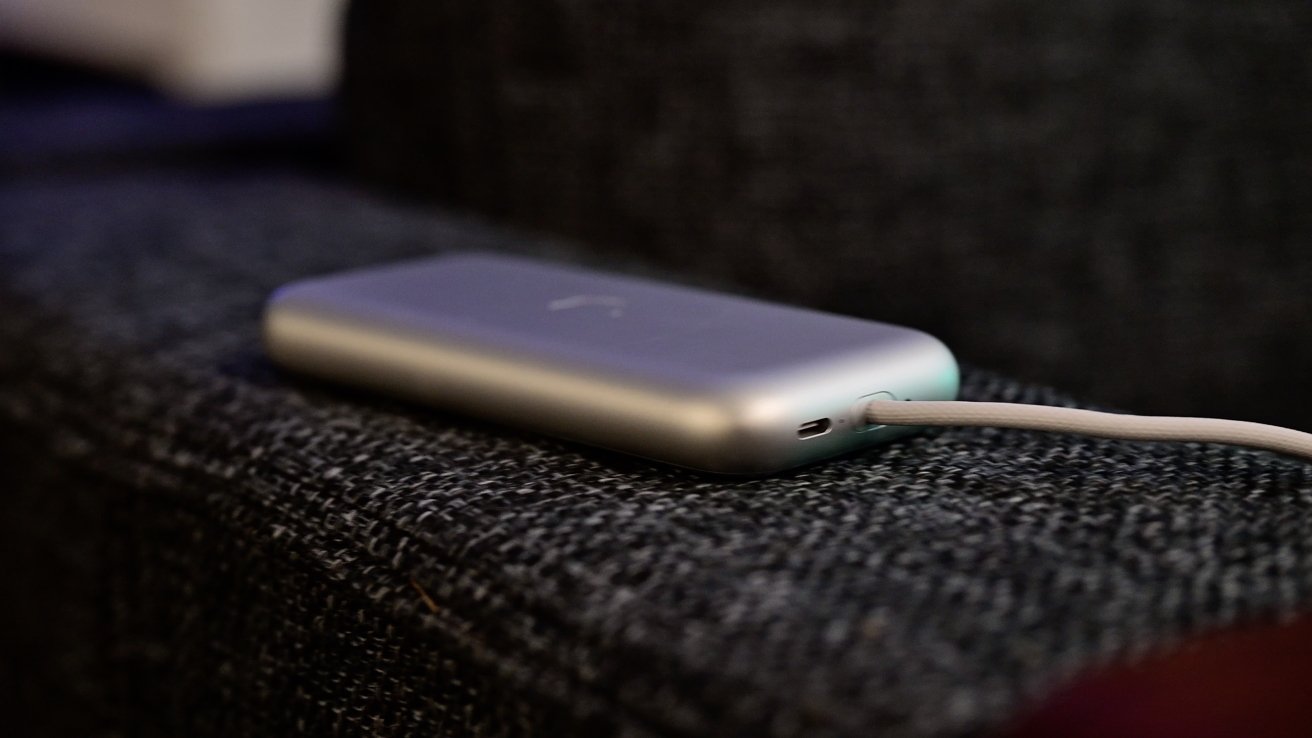
Apple uses an external battery for Vision Pro
Both the Meta Quest 3 and the Apple Vision Pro can be used while charging the battery. In their respective cases, a cable can be hooked up directly to the Meta Quest 3, while power can be plugged into the Apple Vision Pro battery.
In the boxes, Meta includes an 18W charger, with Apple including a 30W version.
As with any electronic device paired with a battery, actual use time for the Meta Quest 3 and the Apple Vision Pro depends on various factors such as device settings, usage patterns, network conditions, and more. This will vary significantly between users, depending on primary use case, and how demanding the applications in use are on the hardware.
The differences in battery life highlight the trade-offs between portability and convenience. The Meta Quest 3 offers longer battery life for standalone use, and although the Apple Vision Pro requires an external battery, it offers a more immersive experience.
Apple Vision Pro versus Meta Quest 3 - Price
The Meta Quest 3 offers two storage options: 128GB and 512GB. The 128GB model is priced at $499.99, while the 512GB version is available for $649.99.
In contrast, the Apple Vision Pro has a higher price range due to its advanced hardware and capabilities. It offers three onboard storage options -- 256GB for $3,499, 512GB for $3,699, and 1TB for $3,899.
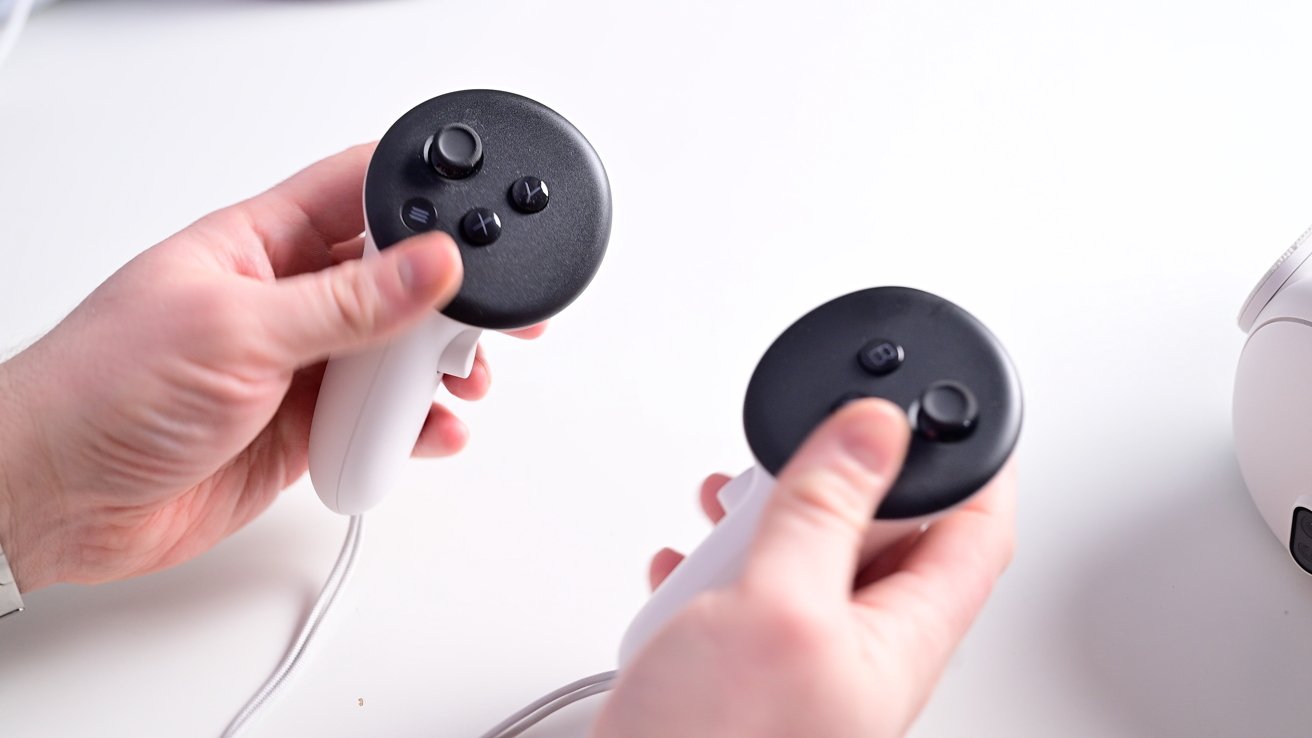
Meta Quest 3 comes with two motion controllers
These storage options cater to users who require substantial storage capacity and are willing to invest in premium technology. It's important to note that the Apple Vision Pro is available for pre-order and is officially set to launch on February 2.
Apple Vision Pro versus Meta Quest 3 - What to buy
Several key factors should influence your choice when deciding between the Apple Vision Pro and the Meta Quest 3. First, consider your intended use case.
If you're enthusiastic about immersive gaming and virtual reality experiences, the Meta Quest 3 offers a more budget-friendly option with mixed reality capabilities. On the other hand, if your interests revolve around advanced augmented reality applications, spatial perception, and photography, the Apple Vision Pro might be the better fit.
Second, your budget plays a crucial role. The Meta Quest 3 provides cost-effective choices, starting with a lower price point, making it accessible to a broader range of users. Conversely, the Apple Vision Pro commands a premium price for its advanced technology.
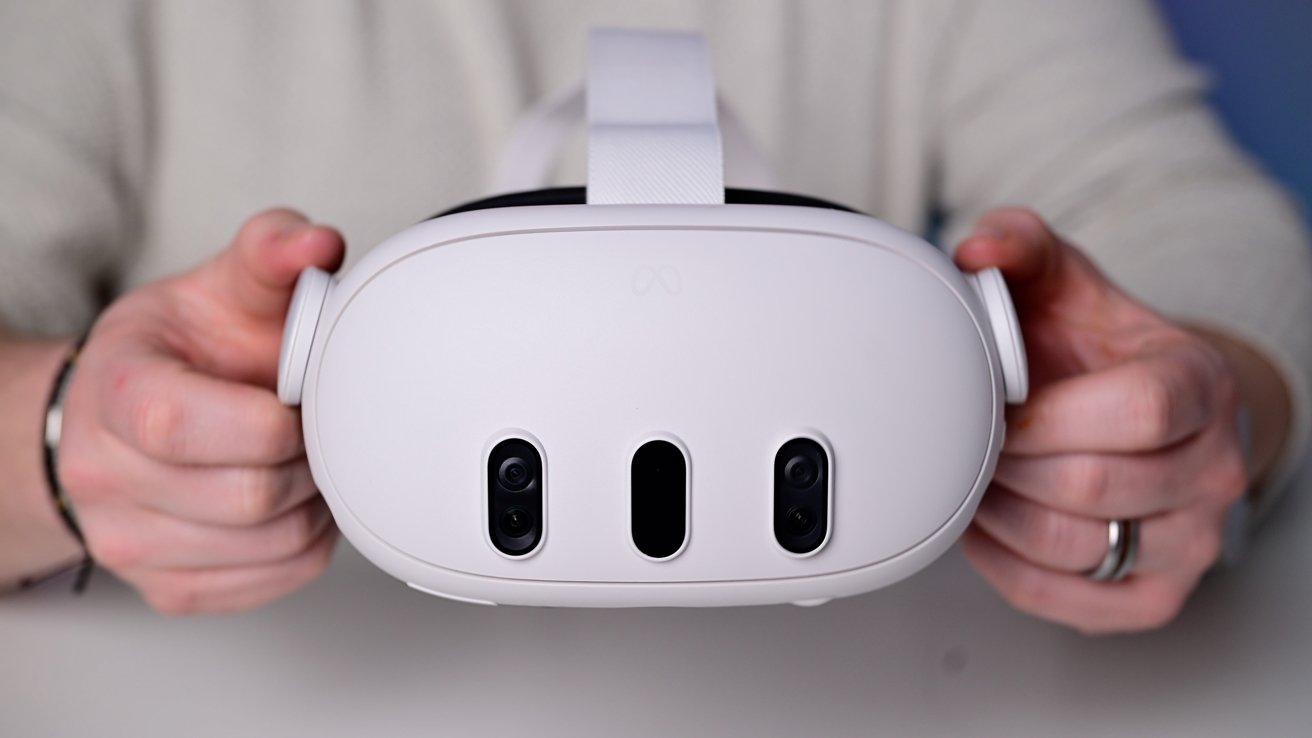
Meta Quest 3 comes in two storage options
Additionally, consider your storage needs. The Meta Quest 3 offers two storage options, 128GB and 512GB, catering to different requirements. In contrast, the Apple Vision Pro provides more substantial onboard storage options.
Furthermore, factor in your existing technology ecosystem. If you're already deeply integrated into the Apple ecosystem, the Apple Vision Pro seamlessly complements your other Apple devices. On the other hand, the Meta Quest 3 offers a more open and versatile platform for VR and mixed-reality experiences.
The Meta Quest 3 offers variable battery life depending on usage scenarios. In contrast, the Apple Vision Pro has a shorter battery life, and you have to keep that battery in a pocket during use.
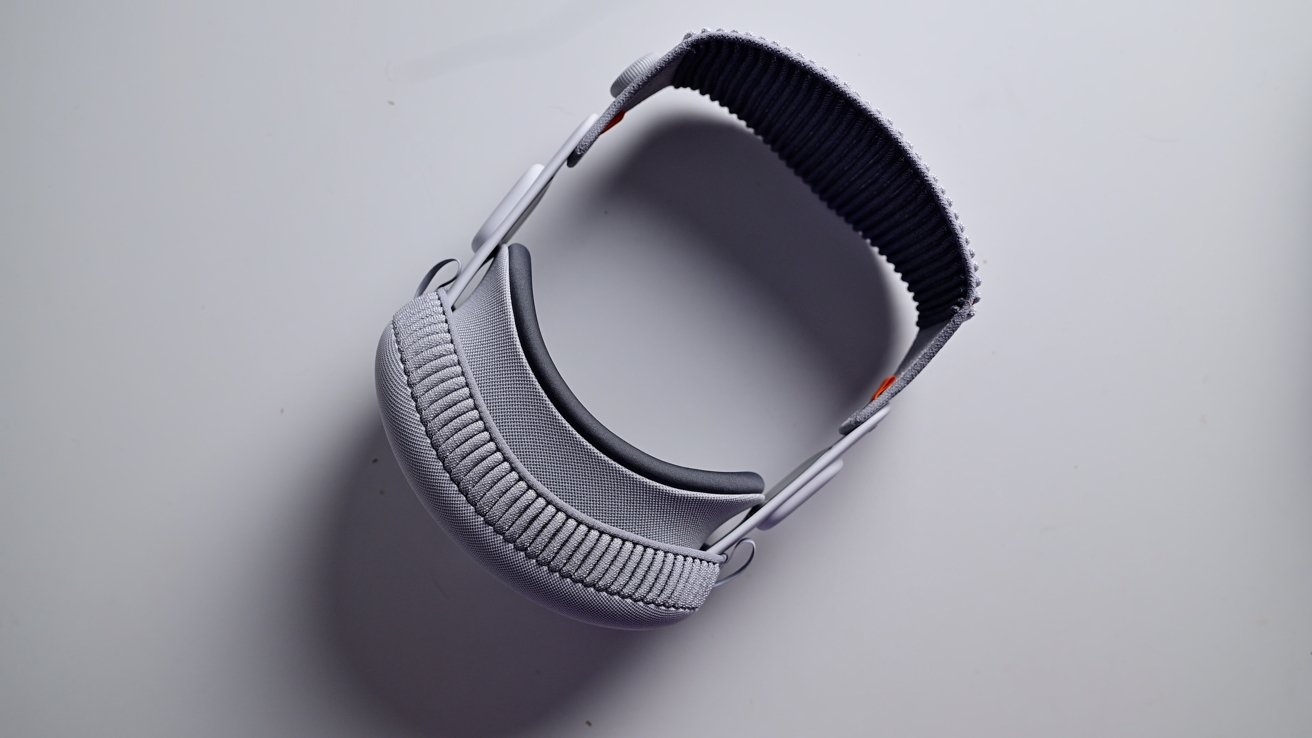
Apple Vision Pro with its cover on
Ultimately, the decision comes down to whether you are willing to fork over $3,500 for Apple's high-quality headset, or are more willing to pay a lot less for Meta's headset on the bet that a future cheaper Apple wearable comes along, or an improved a second-gen Pro model.
Though expensive, the Apple Vision Pro stands out as the better purchase for those willing to invest in superior specifications and a better user experience. It offers immersive experiences at the top of the VR market with its cutting-edge features and seamless ecosystem integration.
Where to buy the Apple Vision Pro and Meta Quest 3
The Apple Vision Pro starts at $3,499 and is available to purchase at Apple.com.
The Meta Quest 3 starts at $499.99, with Best Buy, B&H and Amazon stocking the more affordable headset.
Read on AppleInsider


Comments
The AVP is 36 PPD with the same math.
25 PPD for the Quest 3 seems impossible unless it is a number that combines the effect of 2 eyes looking at the same "image". If so, the AVP would similarly have higher PPD.
As you mentioned, horizontal resolution / fov is the naive calculation, sort of like how in Physics 1 they say earth's gravity is a flat 9.8, and you just kind-of ignore air resistance. The long answer is lens distortion and other factors matter. While I didn't check Andrew's math, the number lines up with this document https://www.meta.com/blog/quest/vr-display-optics-pancake-lenses-ppd/ from Meta, which does explain things in further detail, and yes it is the combo. I don't see where we made note of the PPD of the Vision pro though? We're also working from best-guess closest available parts resolution, since Apple won't "officially" say.
https://kguttag.com/2023/06/26/apple-vision-pro-part-4-hypervision-pancake-optics-analysis/
"Hypervision has also made a detailed field-of-view analysis. They discuss how VR experts who have seen the AVP say they think the AVP FOV is about 110°. Hypervision’s analysis suggests APV’s FOV “wishfully” could be as high as 120°. Either value is probably within the margin of error due to assumptions."
So the point I originally made remains: why accept guesses for one thing and then omit actual experiences reviewers have had with battery life?
I have the Quest 3 and it has a lot of great games and social apps which I love, also on the educational front. Many games for good value, specifically designed around what VR does well (avoiding what it doesn’t do well).
The Quest has a mature VR ecosystem, Apple does not. Apple basically replicated a spatial iPad. I have not seen anything on the Vision Pro that has any added value vs their existing products.
Say all what you want about Meta, they’ve done a great job offering a good experience for $499 that truly has added value next to a mobile phone and computer.
2) It's not even close to accurate to say that it's just an iPad in VR headset or just a bunch of iPad apps floating in the air, or whatever your sentence means to you. AVP and visionOS are very much a new and unique platform.
3) When I look at both developer tools and developer profits for both Android v Apple platforms there is always a resounding shift toward Apple's tools and developer interest leaning toward Apple. Do you not think this will also extend to the AVP? Do you think that Meta will always have a leg up in that regard? Do you not think that apps you enjoy on Meta by 3rd parties won't be made available on AVP?
“The Vision Pro's IPD adjustment ranges from 51mm to 75mm, accommodating a broad spectrum of users. In contrast, the Quest 3 features an almost exact IPD range of 53mm to 75mm, with a mechanical adjustment wheel for precise and comfortable lens spacing.“
Left unsaid is that AVP’s IPD adjustment is automatic with the display+lens assembly on rails, right?
Is that not an important detail to mention? It’s possibly more important than the IPD range itself as people will have not a fun time manually adjusting IPD.
I understand the criticism, and agree to an extent, but this also feels pretty damned if we do damned if we don't to me. Had we used your method of calculating the PPD for the Quest 3 we'd be wrong (as evidenced by the document linked and agreed upon consensus online), and If we had stated the PPD of the Vision pro using just that same basic formula, we'd also be wrong on that. Not just because the formula is too simplistic, but because we're using unconfirmed numbers to begin with (is Vision Pro 102deg like Mike measured in his quick tests, or closer to 108deg like Reddit may tell you, or is it closer to the 100deg Apple said in a developer talk?) Either way somebody would be in the comments telling us that our numbers are wrong, and they'd be right.
I do agree that the PPD is an important number, but there's also a reason it's not in the data table. I think the rest of the text makes it clear that these two headsets are not comparable in terms of visual quality. A number 90% of the audience doesn't understand probably won't help make that more clear. Could we have omitted the Quest 3 number in lieu of not having the exact apples-to-apples number for the Vision Pro? Sure. But we have an official number from Meta on that, and I don't see the problem using it if we have it. I understand that you see that as some kind of logical fallacy because we don't directly compare it, but I think it's probably still additive to the text. Had we not mentioned it at all would this be a "PPD is really what matters, I don't know why they didn't include it" comment? Probably.
Damned if we do, damned if we don't 🤷
Could we or should we normalize battery stuff? Yeah. Maybe. I will have a talk with Mike about doing that going forward. Wattage does matter, and the Vision Pro is ... weird. But again, more important is whether or not we communicate to the reader what those numbers mean -- how many hours are they going to get out of it under normal use, how long does it take to charge, etc. While I understand you may be the guy who looks at these as a spec sheet, that is not how 90% of the audience consumes or understands the content. There's no breakdown in here about pixel arrangements either, because that's just outside of the scope of the article to explain. Had we just added it into the table without explaining it, it would have little value to the reader and the same exact criticism you raised about PPD could be leveled against it.
As far as IPD goes, i'm actually not sure I agree? It's a pain to crank the Quest manually, but it's really not that big of a deal and you really only do it once unless you're passing the thing around. The range matters a lot more for people who for whatever reason find themselves out either side of that spectrum. Again, it's about communicating the information someone may need. A motorized unit is a nice addition, but excepting extreme circumstances it's probably not changing whether or not someone can use the device.
We constantly have to remind people (and you can see it on comments in this exact article and the accompanying YT video where people say "why would you even compare these things"), that not all the content we produce is aimed at you. Sometimes you are going to be smarter or more informed than the audience we're trying to target. It's one of the reasons why we turned off comments on tips for so long. Got real old real quick when every first comment was "I have known how do this since i was 3, why are you wasting your time writing this." Apple isn't just for tech people anymore, the iPhone is basically an appliance at this point. That's always a tough balance for us to try and strike, and we're constantly trying to update where we put the needle on the record, so to speak.
That was kinda long winded, but I hope that helps a bit?
P.S.
If you want to write technical documents for us, we're basically perpetually looking for more contract writers 😄
What is silly is comparing it with BlackBerry and suggesting this is another “iPhone” moment, because it’s really not. It’s 2024 and the impact of technology is completely different now.
2) Tell me, how is it unique? The AVP I mean. Because it’s essentially iPadOS with translucent windows. Functionally. You are not more productive VS a laptop. Your eyes get tired after 30 minutes, if not sooner. The battery doesn’t last that long. Eye tracking can be problematic when you want to control a UI element while looking at another spot - super annoying.
And I don’t mean a vitamin; I mean a painkiller. Right. There are none. It is a product in search of a use-case.
3) No, I don’t think so, as long as the price is $3499 or anything above $1000, because the AVP is positioned as a spatial computer and not a mobile VR device. Gamers will never buy the AVP, and the response on this iPad-on-your-face in the developer community has been lukewarm at most.
Apple is competing with their own product offering, but the AVP loses out in every category.
It’s a status symbol and a prestige project to Apple. I think they’ve made a mistake releasing it, but with their bank accounts they can afford keeping a failing category alive for years to come.
I can’t even start to tell you the work involved.
Meta made the smart move of changing the perception of content value on the headset. You pay normal prices for a game and not subscriptions or F2P nonsense that has been killing developers for years. And even though they’re the largest platform, they are struggling to grow the Quest too.
2a) Again with this nonsense that it's just floating iPad apps. 🙄 If that's what you really think it is then discussion forums for any technology is going to be beyond your comprehension. There are many immersive aspects to Vision Pro that can't get on the iPad and I implore everyone to make an appt. for an Apple Store to get that 30 minute demo just to experience it.
2b) You're just complaining for the sake of complaining now. What's the point? It's a different platform with a different UI and I/O. It's going to be different. Yes, I did have to train myself to choose an item I'm actively looking at instead of my natural state of choosing a selection after my vision has moved on. This wasn't difficult and it didn't slow me down, it was simply a slight change in how I operate. Not a big deal and no different to any other change I've had to make with a paradigm shift. Remember when scrolling on a Mac was the opposite it was now? I do.
3a) Why are separating spatial computing and VR? Apple is choosing the former for marketing to set itself apart —and rightly so — but you should be smart enough to know they are one and the same. You should also know that it's not an Apple-coined term. So let me make this clear to you, Quest is also spatial computing.
3b) No, the amazing specs absolutely do matter. There's a reason why people will crowd around a Bugatti at a car show and not someone's 1995 Buick in the parking lot of a Dollar Tree.
4) I don't see how Meta changed any perception of VR. They bought a company that was already successful in its own right and then started pushing out cheap headsets with cheap HW and poor content. They do have a $1500 option, but it still doesn't come close to what Apple has achieved in their first iteration of the Vision product category. Not having controllers, the way that the iPhone or iPad didn't have a shitty stylus required to use it.
5) Why would you expect me to tell you should buy one? Is that really your measure of whether a product should exist in the world: if you can't find a personal use case that makes it worth the cost then it's a piece of shit? That's fucking narcissistic, dude. I have no use for the iPad, but I can tell you that it's an amazing primary computing device for a lot of people I know and I wouldn't ever say "it's just a large iPhone," which was a common and stupid argument from people like you when it launched in 2010. Maybe you didn't say that about the iPad back then, but your comments about AVP sound just like that.